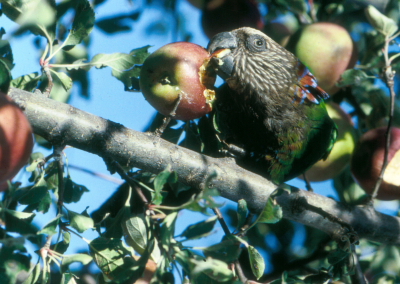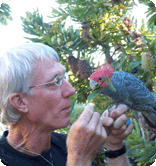Browse options for Parrots

Hi. I’d like to provide my parrots (especially Basil, my female Goffin’s cockatoo who chews her feathers) with fresh browse as a form of enrichment. I have a crabapple tree and an apple tree in my backyard (neither have ever been sprayed with pesticides). Is it safe to give my birds branches (including the leaves) from these trees? From what I’ve been able to find online, the branches look safe, but I don’t seem to be able to find out anything about the safety of the leaves (which I think Basil would love to shred). Also, I’ve read varying suggestions on ensuring the cleanliness of browse - ranging from simply washing it with water to using diluted bleach.
What’s the best approach? Many thanks!
Debbie

Dear Debbie, Both crabapple and regular apple are safe trees. In fact, most temperate fruit tree foliage we have found are not toxic in moderate amounts, including plum, peach and cherry. A great time to feed crabapple and other trees is during and after first fruit set when tiny flowers and buds and green fruit starts make nutritious fare for psittacines.
Cleaning of foliage involves a brief visual inspection to make sure leaves are fairly free of wild bird droppings. Pluck or prune any suspect twigs or leaves. You can either hose the branch off in the yard or put it under your bath shower for a few minutes on warm. Boughs collected near considerable automobile traffic should also be rinsed for dust, etc. There is no need to bleach or sterilize tree chewing material.
Here is a picture of Chen, our hawkhead parrot, learning to eat in the apple tree!
Cheers, EB


































